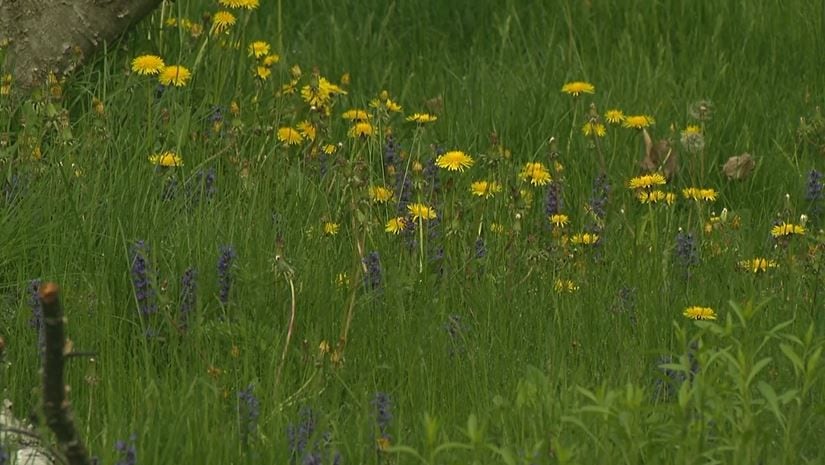BURLINGTON, Vt. (WCAX) – Experts say you can help pollinators and wildlife thrive by keeping your lawn lengthy.
You might have heard of campaigns to keep your grass growing during the spring. The goal is to create a habitat for bees and other pollinators to preserve and encourage more wildlife in your own backyard.
Michael Ashooh’s front lawn oasis in Shelburne is a prime example.
“Our goal on this property is to just create a very rich sort of ecological environment,” said Ashooh.
The Shelburne Selectboard member is a proud No Mow May proponent, saying he’s noticed a huge difference in the visitors to his lawn since he began a few years ago.
“We have lots of birds, we have bears, foxes, skunks, tons of squirrels,” he said.
But he doesn’t stop at May. He says his lawn party goes well into the warmer months.
“We don’t cut it all until the end of June. We cut pretty high for the first cut so it stays pretty high. And then as the summer progresses, we sort of carve out areas and leave them unmowed,” he said.
Kris Stepenuck of UVM’s Rubenstein School of Environment says keeping at least part of your lawn lush through the summer is the way to go. She says this avoids creating a habitat for pollinators and then ripping it away on May 31.
“What’s recommended instead is to dedicate a portion of your yard to native plants that can create flowers and blooms that are going to be habitat for those pollinators,” said Stepenuck.
For those grassy areas, she’s an advocate for something called “raise the blade”, where you’re encouraged to leave your lawn 3 inches or longer after mowing and leave the clippings in place where they can decompose.
“If you are cutting your grass no shorter than three inches, the grass is able to create a healthier system, and the healthier root system allows more water to sink into the ground when it rains, and that prevents runoff from entering the lake and then causing things like harmful algal blooms or cyanobacteria blooms,” she said.
Stepenuck says the Lake Champlain basin is made up of 56 towns from Cabot to Rutland. A 2016 survey showed 75% of respondents cut their grass shorter than 3 inches, indicating there’s work to be done in the push.
For proud no-mowers like Ashooh, he says it’s all about shifting your mindset away from a standard clean-cut lawn and picket fence.
“What you’re thinking about your space, not as a sort of plush carpet that you can just walk on, but rather taking advantage of all that land,” said Ashooh.
UVM is kicking off a follow-up survey to their 2016 one to see if there’s a difference in lawn mowing this spring.

